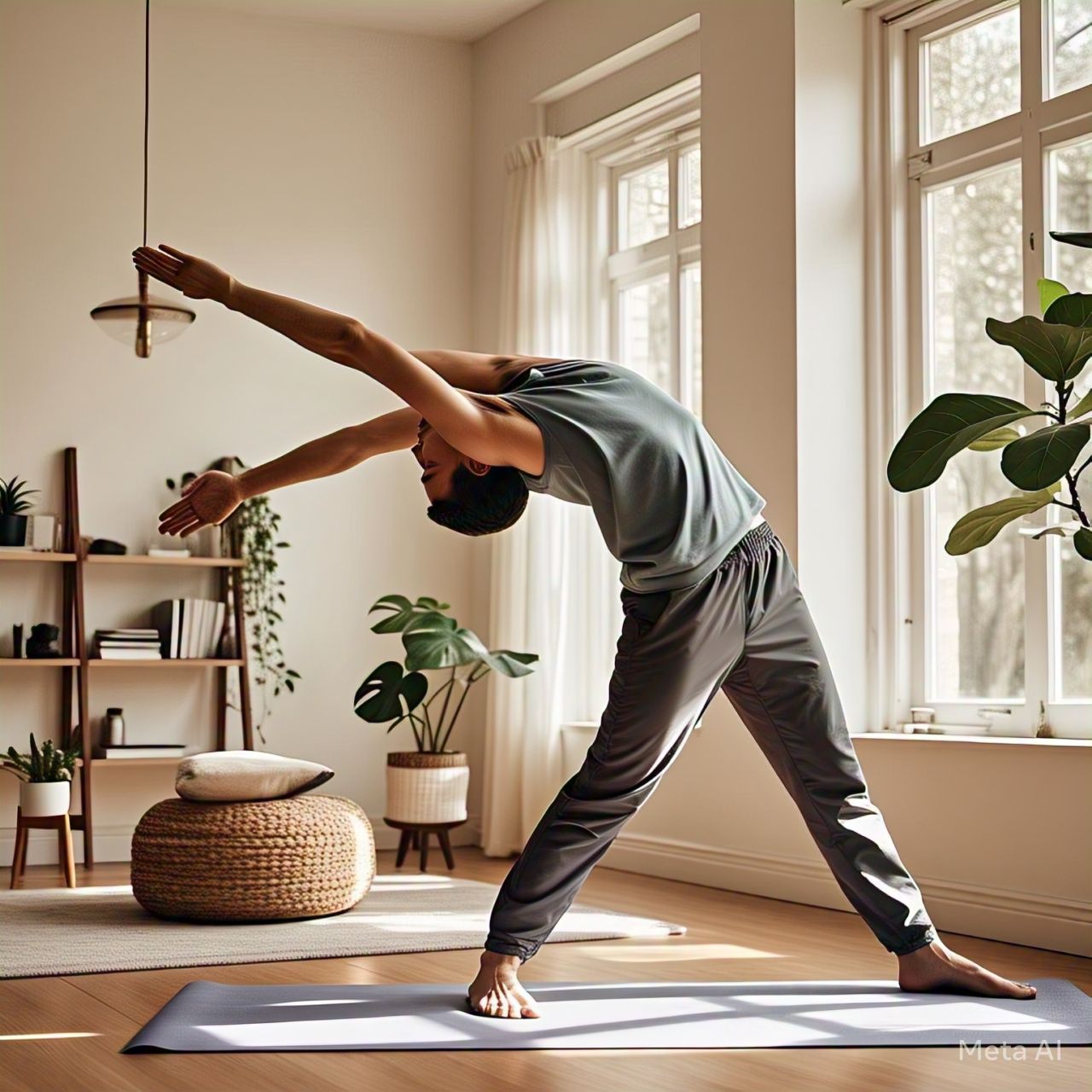You don’t need a gym, fancy equipment, or a full workout plan to take care of your body. Sometimes, all it takes is a few minutes of stretching to release tension, improve flexibility, and feel more at ease — especially if you’ve been sitting, working, or stressed for hours.
Stretching isn’t just for athletes or yoga lovers. It’s for anyone who wants to feel more relaxed, mobile, and connected to their body — right at home.
In this article, you’ll discover simple, effective stretching exercises that you can do in any room, with no equipment — and how just a few minutes a day can make a big difference.
Why Stretching Matters (Even If You Don’t Work Out)
Stretching helps:
- Reduce stiffness and muscle tightness
- Improve posture and flexibility
- Boost circulation and energy
- Release built-up tension from stress or screen time
- Support better sleep and mood
- Prevent aches and injuries over time
And best of all — it’s easy to start, safe for all levels, and feels amazing.
When to Stretch
You can stretch at any time of day, but these moments are especially beneficial:
- Morning: To wake up your muscles and increase circulation
- During work breaks: To undo the effects of sitting
- After exercise: To aid in recovery
- Before bed: To calm the body and mind
Aim for just 5–15 minutes a day — even short sessions add up.
1. Neck Stretch (Relieve Tension From Screens)
How to do it:
- Sit or stand with a straight spine
- Gently tilt your head to the right, bringing your ear toward your shoulder
- Use your right hand to lightly rest on your head for a deeper stretch
- Hold for 20–30 seconds, then switch sides
🧠 Good for: Releasing neck and upper back tension.
2. Shoulder Rolls
How to do it:
- Sit or stand tall
- Roll your shoulders up toward your ears
- Then move them back and down in a circular motion
- Do 10 slow rolls forward, then 10 backward
🧠 Good for: Improving posture and reducing tension from long hours at a desk.
3. Chest Opener (Undo Hunched Posture)
How to do it:
- Stand tall and clasp your hands behind your back
- Gently pull your arms back and lift your chest
- Look slightly upward if it feels comfortable
- Hold for 20–30 seconds
🧠 Good for: Opening the chest and countering slouching.
4. Cat-Cow Stretch (Spinal Mobility)
How to do it:
- Start on all fours (hands under shoulders, knees under hips)
- Inhale: Arch your back, lift your head and tailbone (Cow)
- Exhale: Round your back, tuck your chin and pelvis (Cat)
- Repeat slowly for 6–8 rounds
🧠 Good for: Loosening the spine and waking up the body gently.
5. Seated Forward Fold
How to do it:
- Sit on the floor with legs extended
- Inhale, raise your arms
- Exhale, reach toward your toes (bend knees slightly if needed)
- Hold for 20–30 seconds
🧠 Good for: Stretching the hamstrings and calming the nervous system.
6. Standing Side Stretch
How to do it:
- Stand with feet hip-width apart
- Raise your arms overhead and clasp your hands
- Gently lean to one side, keeping your chest open
- Hold for 15–20 seconds, then switch sides
🧠 Good for: Stretching the waist, improving balance, and relieving tension.
7. Hip Flexor Stretch
How to do it:
- Kneel on your right knee, left foot in front with knee at 90 degrees
- Shift your weight slightly forward, stretching the front of your right hip
- Keep your back straight, and don’t over-arch
- Hold for 20–30 seconds, then switch legs
🧠 Good for: Releasing tight hips — especially after long periods of sitting.
8. Reclined Spinal Twist
How to do it:
- Lie on your back with legs extended
- Bring your right knee toward your chest
- Gently guide it across your body to the left side
- Extend your right arm and look toward it
- Hold for 30 seconds, then switch sides
🧠 Good for: Releasing lower back tension and aiding digestion.
9. Child’s Pose (Relaxing Full-Body Stretch)
How to do it:
- Kneel on the floor, bring your big toes to touch, and sit on your heels
- Lower your torso forward with arms extended or by your sides
- Rest your forehead on the floor or a cushion
- Breathe slowly and hold for 1–2 minutes
🧠 Good for: Relaxing the body, calming the mind, and gently stretching the back.
Tips for a Better Stretching Experience
- Breathe deeply through each stretch — don’t hold your breath
- Don’t bounce or force the stretch — move slowly and gently
- Stretch to the point of mild tension, not pain
- Play calming music or stretch in silence for a more meditative experience
- Consistency matters more than duration — stretch a little every day
Final Thoughts: Stretching Is Self-Care
In a busy world, stretching is one of the simplest ways to slow down, reconnect with your body, and release physical and emotional tension — all from the comfort of your home.
So today, take five minutes.
Roll your shoulders, reach for your toes, breathe a little deeper.
Your body will thank you — and so will your mind.
